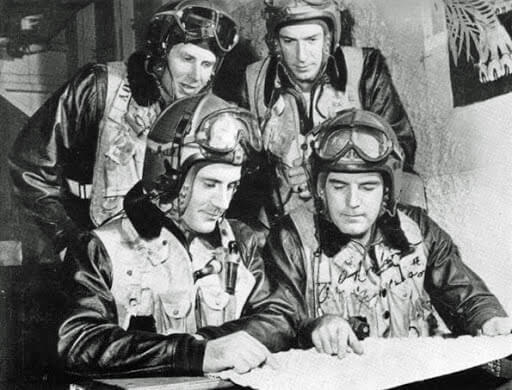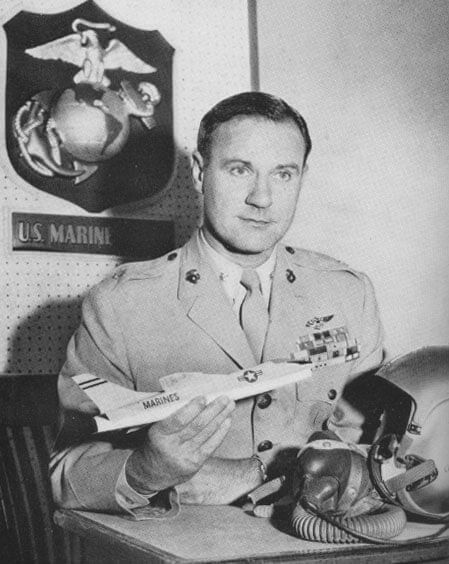The Story Of William Rankin Fall Through A Thunderstorm Is One Of Impossible Survival Against Incredible Odds
Lieutenant Colonel William Rankin was a World War II and Korean War veteran who flew for the US Marine Corps. But he is best known for being the only person to date to have survived falling into and passing through a cumulonimbus storm cloud before reaching the ground. He survived a literal fall through a storm. Which, as far as leaving a lasting impression, places pretty highly on the awesome scale. This incredible act of survival was chronicled by Rankin in his book The Man Who Rode Thunder. Sadly, the book is no longer in print, and the few, extremely rare copies that are still available usually come with a hefty price tag.
On July 26, 1959, the thunder riding incident took place. From the Naval Air Station in South Weymouth, Massachusetts, to the Marine Corps Air Station in Beaufort, South Carolina, Rankin and his wingman Herbert Nolan were piloting two F-8 Crusaders. Rankin and Nolan had climbed to 47,000 feet (14,326 m) and were cruising at a brisk Mach 0.82 (roughly 624 mph) to keep above some nasty looking storm clouds that peaked somewhere around 45,000 feet (13,716 m). Rankin reported hearing an audible bump and rumble from the engine just before they began to descend. (This is conceivably one of the worst situations in which to begin experiencing alarming engine noises.)
The warning lights started flashing, and the engine abruptly stopped. Nolan received a brief message from Rankin that read, “Power failure. May have to eject.” He then pushed the lever to turn on the aircraft’s auxiliary power. The lever disintegrated in his hands. Rankin considered his options as the unpowered aircraft started to nose down significantly. He was aware of the numerous challenges presented by his extremely high altitude, including the freezing temperatures, severe decompression, and virtually nonexistent oxygen levels. And to make matters worse, Rankin was not donning a pressure suit. After determining that the aircraft could not be recovered, Rankin finally pulled the twin ejection handles at 6:00 PM and ejected into the atmosphere. 47,000 feet up. into air that was -58 °F (-50 °C) at the time. And as if those circumstances weren’t bad enough, Rankin’s left hand’s glove was ripped off during ejection, adding a nice, fresh slice of “insult to injury.” Rankin experienced immediate discomfort as a result of his abdomen painfully swelling as a result of the decompression, and blood oozing from his eyes, nose, ears, and mouth. He was able to breathe thanks to an emergency oxygen supply as he fell through the air.

You may have noticed, though, that the normal conditions were now being smashed into tiny, tiny pieces by a large and raging thunderstorm.
William Rankin’s visibility was nearly impossible to see as he descended through the storm’s upper reaches. For what seemed like a very long time, Rankin fell. Long enough that he started to be concerned that his parachute’s automatic switch and barometric sensor were broken. Finally, the parachute opened, and he felt an upward tug on his harness. Rankin tugged on the risers to make sure the parachute had properly deployed and inflated even though he couldn’t see it above him.

Rankin was not alone in this up and down cycle, which is alarming. Alongside him, hailstones started to form, and he soon started getting hit by ice shards and balls. And even though that was bad enough, Rankin was concerned that eventually the ice would grow large enough to begin tearing his parachute. Amazingly, Rankin also had to deal with a different issue. In order to avoid inhaling mouthfuls of water and succumbing to the suddenly very real possibility of drowning in the sky, he frequently had to hold his breath and carefully choose when he attempted to breathe in air.
Lightning flashed all around Rankin as he precariously balanced all of these concerns. Rankin saw blue blades arcing around him that were several feet thick, and then instantly felt rather than heard concussive blasts of thunder. In the midst of all this confusion, Rankin briefly believed he had passed away when a lightning strike brilliantly lit up his parachute.
Rankin was finally freed from the updrafts’ hold as the storm’s ferocity mercifully began to lessen, and he began to descend. As Rankin left the thunderstorm behind and descended into a much gentler summer rainstorm, temperatures increased noticeably. Rankin was moving toward the backcountry forests of North Carolina while still alive and with his parachute still attached. He was about to touch down when the storm gave him one last poke, and the wind picked up, throwing him into a grove of trees. Rankin’s momentum caused him to crash into a tree trunk after his parachute became tangled in the trees’ branches. He was thankfully spared serious injury because his flight helmet absorbed the majority of the impact.
When Rankin descended from the tree, the time was 6:40, according to his wristwatch. He had just escaped a brutal 40-minute drop through a violent thunderstorm from a height of almost 9 miles.
In his search for assistance, Rankin eventually located a backcountry road. A passing car finally stopped and gave Rankin a ride to a store in the nearby town of Ahoskie, North Carolina, after several unsuccessful attempts to flag it down. From there, Rankin called an ambulance and was transported to the hospital, where he received decompression therapy, treatment for frostbite, and general beatings. Given that he had just finished ten rounds with a thunderstorm, his injuries were surprisingly minor, and he made a full recovery over a few weeks.
After writing The Man Who Rode Thunder and eventually reporting back to duty, William Rankin lived another 50 years. Twenty days before what would have been the 50th anniversary of his incredible fall, on July 6, 2009, he passed away. Lieutenant Colonel William Rankin is the only person in history to have survived falling through a storm, despite others, like paraglider Ewa Wisierska, having survived their own perilous encounters with them.





